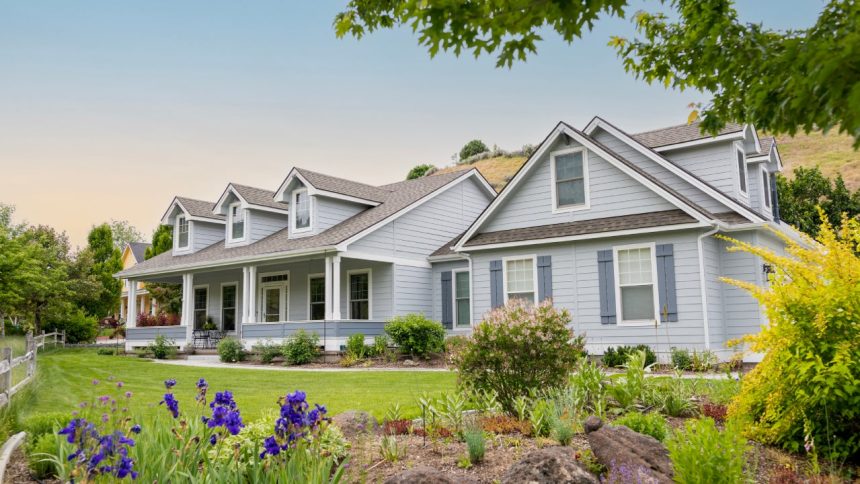Tony Anderson/Getty Images
Key takeaways
- An HO-2 policy is a type of homeowners insurance that only covers damages caused by perils specifically named in your policy.
- An HO-2 typically covers 16 named perils, including damage from fire and lightning, windstorms and hail, and theft.
- HO-2 policies may be cheaper since they offer less coverage, but you may be opening yourself up to extra risk.
When purchasing home insurance, you’ll typically need to decide if you want a standard HO-3 homeowners insurance policy or a more limited HO-2 home insurance policy. HO-2 insurance typically costs a little less because it provides less extensive coverage. Specifically, the policy covers your home’s structure, personal belongings and living expenses, but only in the event of a named peril. Bankrate’s insurance editorial team explains what these perils are and what’s excluded from an HO-2 policy to help you select home insurance that meets your needs.
What is HO-2 insurance?
There are four different types of insurance available for traditional homeowners: HO-1, HO-2, HO-3 and HO-5. Each policy type offers varying levels of protection, and plans with more robust protection tend to cost more. An HO-1 policy offers the lowest levels of protection. On the other end of the spectrum is the HO-5 policy, which gives you the most protection of the various coverage forms. However, either policy type typically comes with requirements your home has to meet.
HO-2 policies are a step up from HO-1 policies, but do not offer as much coverage as an HO-3, which is the most common type of homeowners insurance policy. Like other home insurance policies, HO-2 insurance is comprised of several standard coverage types, including:
- Dwelling coverage: Covers the home’s structure, such as the roof, walls, foundation and any attached items, like a deck or garage.
- Other structures coverage: Covers detached structures like sheds, fences, detached garages and in-ground swimming pools.
- Personal property coverage: Covers your belongings, such as clothes, furniture and electronics.
- Liability coverage: Provides financial protection if you are found at fault for injuries or damage to someone’s belongings that occurs on your property
- Additional living expenses coverage: Provides temporary living coverage in case your home is not liveable due to a covered loss
HO-2 vs. HO-3 policies
The main difference between most home insurance policies is not what they cover, but rather how they cover your property. In home insurance, unforeseen damaging events are known as perils. The various components of home insurance policies are covered either on a named perils basis or an open perils basis. In general, named perils will cover only perils, such as fire or wind, specifically named in your policy. An open perils policy protects you against any loss unless the peril is explicitly listed as an exclusion, such as damage caused by flooding or earthquakes.
An HO-2 insurance policy covers homeowners on a named perils basis. This means that your policy will only cover damage to your home, detached structures and personal property caused by a peril that is specifically listed in the policy. If your home is damaged by an occurrence that is not specifically listed, it will not be covered. An HO-3 policy, on the other hand, offers broader protection by protecting your dwelling and other structures on an open peril basis:
| HO-2 coverage type | HO-3 coverage type | |
|---|---|---|
| Dwelling | Named perils | Open perils |
| Other structures | Named perils | Open perils |
| Contents | Named perils | Named perils |
Additionally, most HO-3 home insurance policies include some level of medical payments coverage, which helps if a guest is injured in your home. HO-2 policies do not usually include this type of coverage.
HO-2 coverage
Now that you know that an HO-2 policy only covers specifically named losses, you may be wondering exactly which perils HO-2 policies cover. An HO-2 policy typically lists 16 named perils, including:
- Fire and lightning
- Windstorm and hail
- Explosions
- Riot and civil commotion
- Damage caused by aircraft
- Damage caused by vehicles
- Smoke
- Vandalism
- Theft
- Volcanic eruption
- Falling objects
- Damage caused by the weight of ice, snow or sleet
- Accidental discharge of water or steam from a household appliance or a plumbing, heating, air conditioning or sprinkler system
- Sudden and accidental tearing apart, cracking, burning or bulging of a steam or hot water heating system, air conditioner or sprinkler system
- Freezing of a household appliance or plumbing, heating, air conditioner or sprinkler system
- Sudden and accidental damage from an artificially generated electrical current
What do HO-2 policies exclude?
Like most home policies, HO-2 insurance typically does not cover flood and earthquake damage. Other exclusions may include:
- Water damage caused by sewer or drain backups
- Nuclear accidents
- Acts of war
- Mudslides and landslides
- Sinkholes
- Mold
- Pests like rodents or termites
- Property damage caused by pets
- Power failure
- Damage as a result of neglected maintenance
- Intentionally inflicted damage
Some homeowners insurance providers offer the ability to add optional coverage types to your policy with riders, also called endorsements. You might be able to add a rider to cover mold damage or sewer backup damage, for example. Coverage for flood and earthquake damage could also be added as endorsements, if offered, or you may need to purchase separate policies for these damages.
Frequently asked questions
Why we ask for feedback
Your feedback helps us improve our content and services. It takes less than a minute to
complete.
Your responses are anonymous and will only be used for improving our website.
Help us improve our content
Read the full article here














